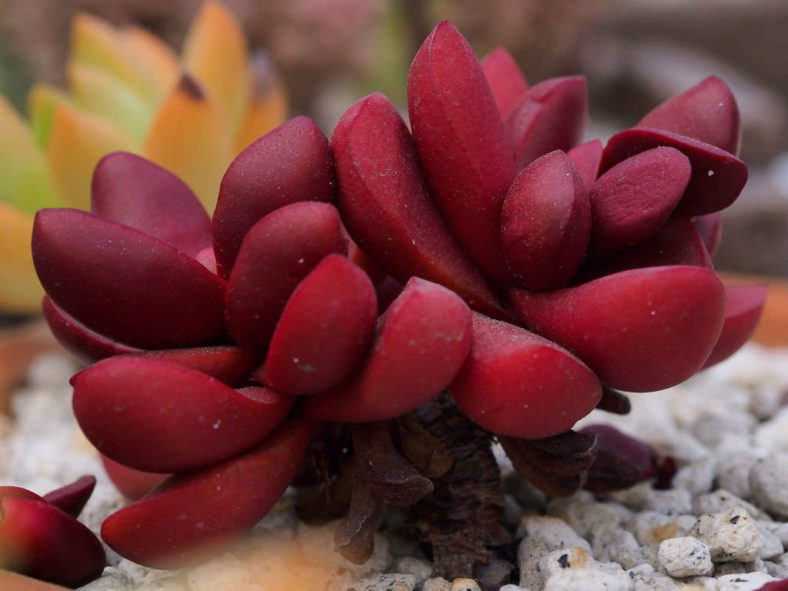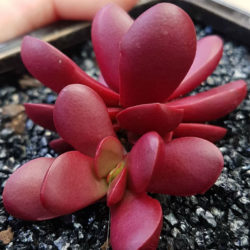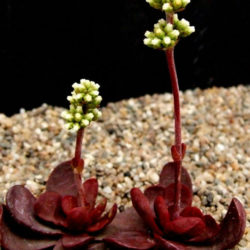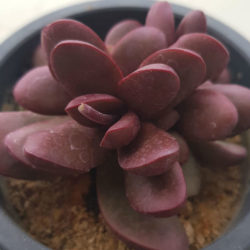Scientific Name
Crassula clavata N.E.Br.
Synonym(s)
Globulea clavata
Scientific Classification
Family: Crassulaceae
Subfamily: Crassuloideae
Genus: Crassula
Description
Crassula clavata is a small succulent with several basal rosettes of tightly packed leaves that are deep red-tinged when grown in bright light and particularly so colored in winter. It can grow up to 2 inches (5 cm) tall. The leaves are thick, fleshy, obovate to elliptic, and can reach up to 1.6 inches (4 cm) long and up to 0.45 inches (1.1 cm) wide.
The flowers are small, creamy to pale yellow, and appear in many heads in a branched inflorescence on up to 8 inches (20 cm) stalk.
Origin
Crassula clavata is native to South Africa. It grows in stony slopes, often in shallow soil on rocks from Namaqualand to Little Karoo.

Hardiness
USDA hardiness zone 9b to 11b: from 25 °F (−3.9 °C) to 50 °F (+10 °C).
How to Grow and Care
Crassulas are easy to grow but susceptible to mealy bugs and fungal diseases. Overwatering is sure to be fatal, as with all succulents, so err on the side of too dry rather than too wet. Never let your Crassula sit in water. If you water from beneath by letting the plant sit in a saucer of water, ensure to pour off any excess water after a few minutes.
Crassulas are generally started by division, offsets, or leaf cuttings. Plants can be easily propagated from a single leaf: sprout leaves by placing them into a succulent or cacti mix, then covering the dish until they sprout.
Repot as needed, preferably during the warm season. To repot a succulent, ensure the soil is dry before repotting, then gently remove the pot. Knock away the old soil from the roots, removing any rotted or dead roots. Treat any cuts with a fungicide. Place the plant in its new pot and backfill it with potting soil, spreading the roots out as you repot. Leave the plant dry for a week or so, then begin to water lightly to reduce the risk of root rot.
See more at How to Grow and Care for Crassula.
Links
- Back to genus Crassula
- Succupedia: Browse succulents by Scientific Name, Common Name, Genus, Family, USDA Hardiness Zone, Origin, or cacti by Genus


